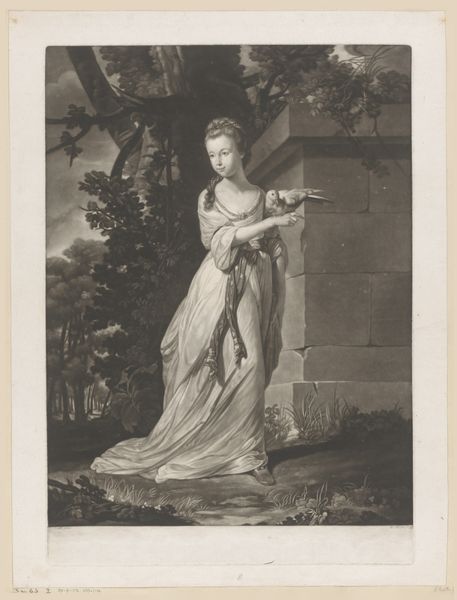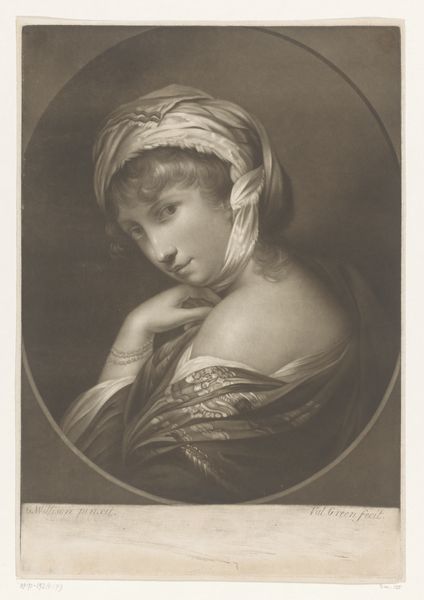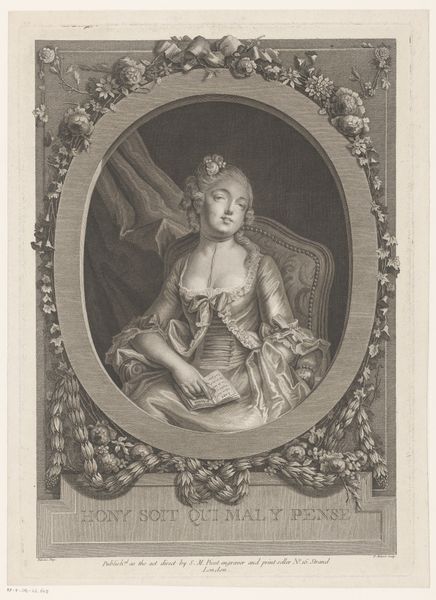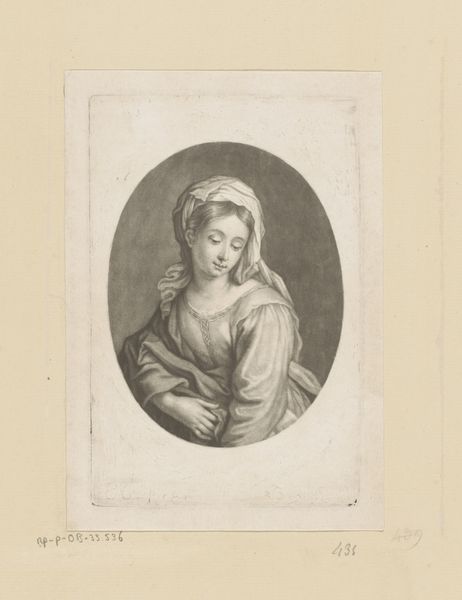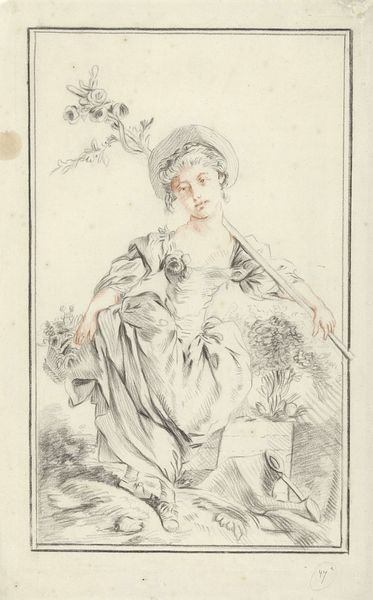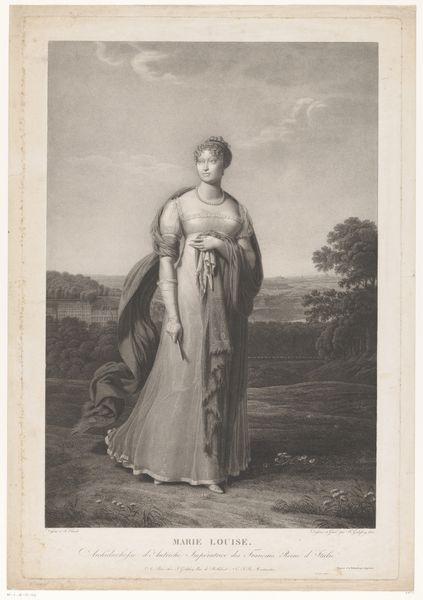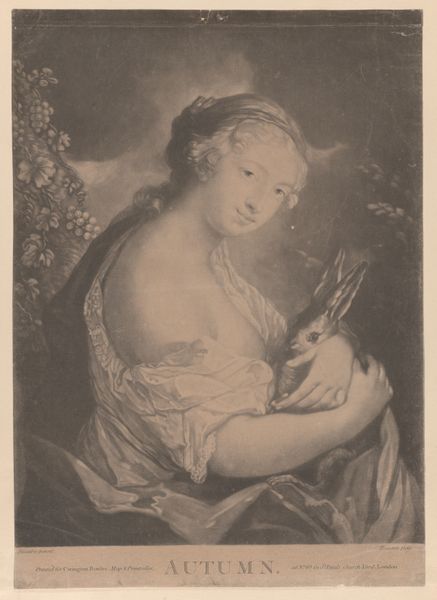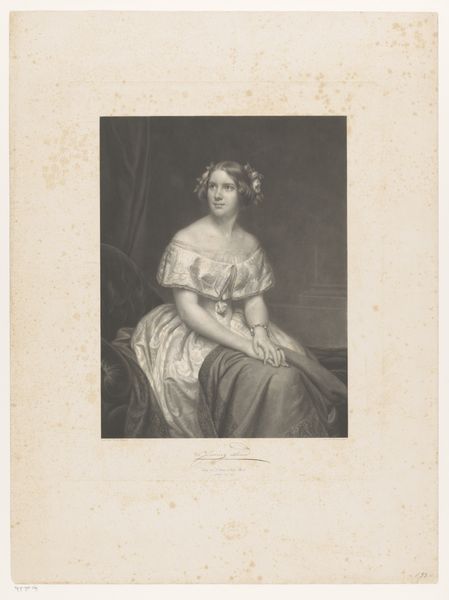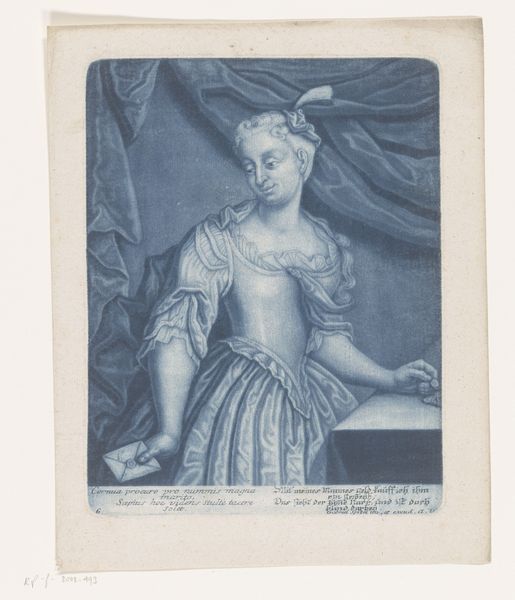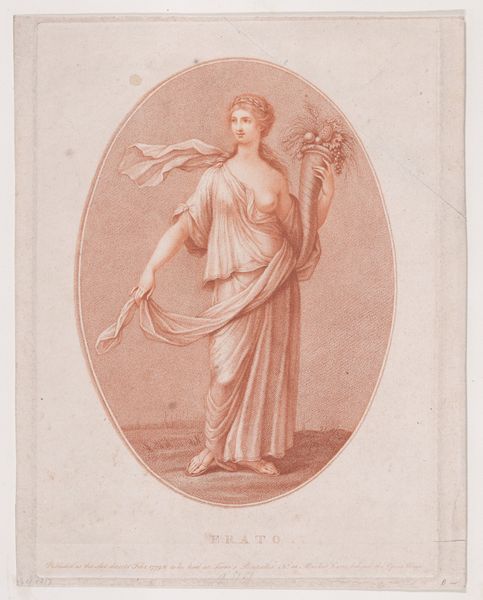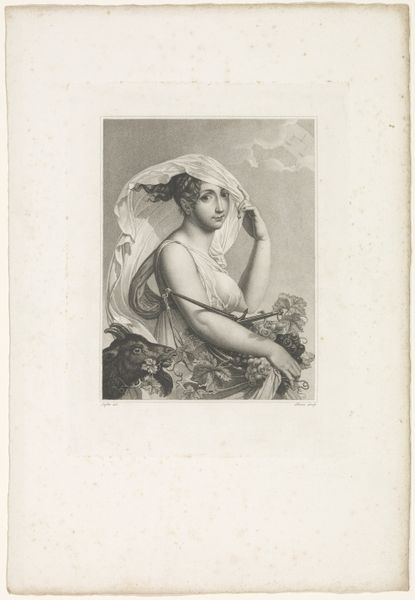
drawing, print, engraving
#
portrait
#
drawing
#
neoclacissism
# print
#
engraving
Dimensions: Plate: 12 11/16 × 10 in. (32.2 × 25.4 cm) Sheet: 15 7/8 × 10 15/16 in. (40.4 × 27.8 cm)
Copyright: Public Domain
Editor: So, this is James Godby's "Miss O'Neill as Juliet," an engraving from 1815. There's something really striking about her gaze and posture; she seems both vulnerable and resolute. What strikes you about this piece? Curator: Well, considering the context, what interests me is how it intersects celebrity culture with broader discussions around femininity and performance in the 19th century. Miss O'Neill, a celebrated actress, is being immortalized here. It is important to examine the role of women and the theatre. Juliet's image then, becomes a valuable tool for discussing ideal womanhood. What do you think this image communicates about female identity? Editor: I guess it's showing a very specific, curated version of it. The Neoclassical style seems to heighten her purity but the drama of the role adds a layer of complexity. It isn't passive at all. Curator: Exactly. Neoclassicism often borrowed from antiquity but let’s not ignore how it’s also actively shaping contemporary ideals. This isn't just about art; it's about power, representation, and the gaze. In what ways is Godby inviting the male gaze, while still subtly reinforcing O’Neill’s status and, arguably, agency? Editor: I see what you mean! The almost classical drapery is sensual, but she's meeting our gaze head-on, reclaiming a bit of that power. And the poison vial, right there, declares agency within a narrative defined by patriarchal constraints. Curator: Precisely. It is a performance of defiance! How does situating it within feminist and post-structuralist viewpoints shift the way you engage with the piece? Editor: It makes it way more compelling. It's not just a pretty portrait; it is a statement about women and their roles at the time. Curator: Yes, indeed. Seeing this not just as an image but a cultural artifact transforms our understanding and adds contemporary relevancy. Editor: Absolutely, I'll never look at Neoclassical portraits the same way again.
Comments
No comments
Be the first to comment and join the conversation on the ultimate creative platform.
